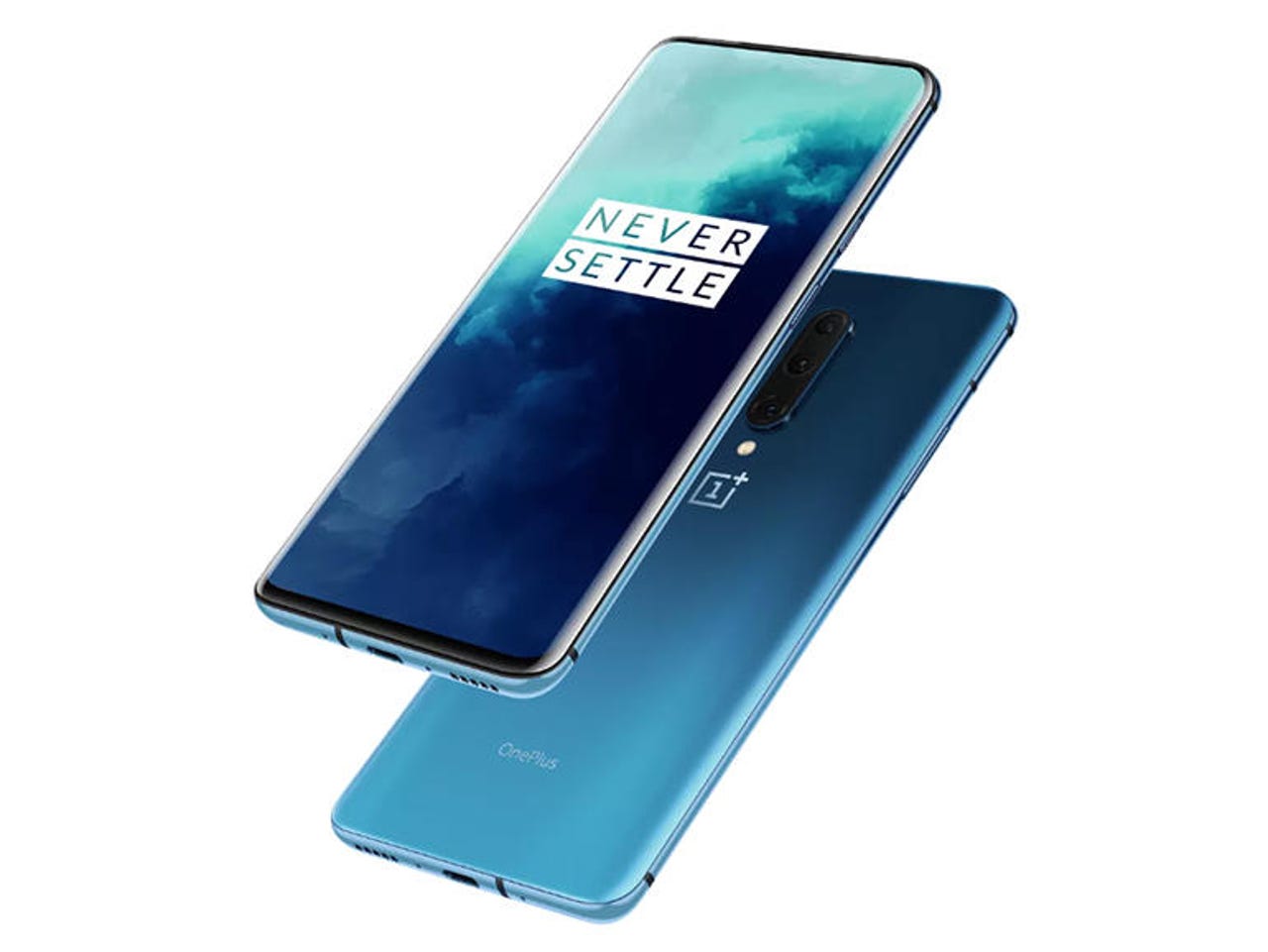OnePlus 7T Pro, long-term test: An upgrade dilemma


The OnePlus 7T Pro was released in October 2019.
When it was first released towards the end of last year, the £699 (inc. VAT) OnePlus 7T Pro got mixed reviews. It was hailed as a good flagship-class handset, but not seen as a huge leap forward from the £649 OnePlus 7 Pro. Having used the OnePlus 7T Pro as my main handset for a couple of months, I've discovered some pluses, some minuses, and some features that have left me a little cold.
This is a well specified handset, as it should be for the price. The Snapdragon 855+ chipset is a step up from the OnePlus 7 Pro's Snapdragon 855, offering higher CPU and GPU clock speeds. Apps run smoothly, video renders neatly, and power-gamers might really appreciate the extra zip. The OnePlus 7T Pro's 8GB of RAM helps too. I didn't experience any waits, or stalls, or slow-downs during my testing period -- if I had, I'd have been concerned, as they simply shouldn't happen.
There's 256GB of internal storage, which I didn't come anywhere near close to filling. The lack of a MicroSD card slot for additional external storage isn't a concern.
The screen is a delight, and not just because of its headline 90Hz refresh rate, which will appeal most to hardened gamers. The 6.67-inch AMOLED panel is vast -- plenty big enough for video viewing and web browsing -- and has a resolution of 1,440 by 3,120 pixels (516ppi). As a big fan of avoiding paper, I was able to use the OnePlus 7T Pro with a Bluetooth keyboard for note-taking in meetings, although my tablet or laptop was still required for document viewing. It's not a bad combination.
The OnePlus approach to configuring the screen for reading is still a big lure for me. Having the screen automatically turn monochrome when I launch a particular app -- any app I like -- is a big plus, and actually I had this facility set up on the Quick Settings menu and flipped into it on and off when I wanted a bit of eye comfort. For me, it beats the handset's night mode. This is a feature of Oxygen OS, which sits on top of Android 10, and I can't understand why more handset makers don't copy it. It's a real plus point.
The glass back is attractive, but slippery in the hand.
The in-screen fingerprint reader is fast and efficient -- no complaints from me on that score. The screen's curved edges are par for the course for flagship-class handset these days, and are no big deal here -- in fact, the screen tapering into the sides makes the OnePlus 7T Pro easy to hold considering its size. This matters, because the 6.67-inch screen makes this a pocket-challenging phone at 75.9mm wide by 162.6mm deep by 8.8mm thick. It's certainly a bit of a beast to use one-handed for those, like me, with smaller hands.
I was quite happy with the build, which feels very solid and proved to be robust. A few accidental drops, including more than one onto a tiled floor, didn't dent or break anything -- the front and back both feature 3D Gorilla Glass. The blue back is pretty neat to look at, although its slipperiness meant I resorted to the provided transparent bumper case at times. This adds a bit of thickness and weight to an already hefty 206g, and removes that nice curved design of the long edges, but at least it leaves the blue back visible. The lack of an IP rating for dust and water resistance, which is common on other flagship-class phones, is a slight concern though.
There's no 3.5mm headset jack, so you'll need to use the USB-C port or a wireless headset. I opted for the latter, with one of my true wireless earbuds sitting in an ear for work calls, and both in place for after-hours listening.
Heavy workload days challenged the handset's 4,085mAh battery, draining it to 30% on occasions. Fast charging (30W), which OnePlus calls Warp Charge, was a boon: I could set the handset to charge while spending half an hour preparing a meal and it would leap from 30% to over 70% in that time.
Image shot with the OnePlus 7T Pro's 16MP ultra-wide-angle camera (Five Arches Bridge on the river Cray, SE London).
The array of three cameras at the back performed just fine during my point-and-shoot testing. The main 48-megapixel camera has an f/1.6 wide-angle lens with OIS (optical image stabilisation). This is accompanied by an 8MP f/2.4 telephoto camera (3x optical zoom, also with OIS) and a 16MP f/2.2 ultra-wide-angle camera. I got some nice panoramas while out on walking trips over the Christmas break and into January. The camera's automatic suggestion to shoot panoramas in ultra-wide mode invariably produced better-framed shots (see the example ultrawide photo). I also enjoyed using the macro mode.
The monochrome screen option is useful when reading e-books.
The pop-up front camera (16MP, f/2.0) allows for the whole of the front screen to be full-face without needing to accommodate a notch or cut-out, resulting in a screen-to-body ratio of 88.5%. I don't do much selfie-related photography, so the wait for the camera to pop out was not a problem; keen selfie-takers might find it irritating though.
SEE: IT pro's guide to the evolution and impact of 5G technology (free PDF)
One further feature deserves a very honourable mention. The slider on the right-hand side that sets the ringer to mute, vibrate or ring is a godsend. No handset should be without one.
Conclusions
Using the OnePlus 7T Pro for longer than the usual review period has been an enjoyable experience. I'm a big fan of the Reading (monochrome screen) mode and the hardware slider that controls the ringer. These are staples on OnePlus handsets, though, and I'm not convinced the 7T Pro is hugely better than the somewhat less expensive (£649) OnePlus 7 Pro. OnePlus fans may want to do a 'compare and contrast':
OnePlus 7T Pro | OnePlus 7 Pro | |
Display size / technology | 6.67 inches / AMOLED (90Hz) | 6.67 inches / AMOLED (90Hz) |
Display resolution | 3,120 x 1,440 pixels | 3,120 x 1,440 pixels |
Pixel density | 516ppi | 516ppi |
Dimensions | 162.6 x 75.9 x 8.8mm | 162.6 x 75.9 x 8.8mm |
Screen to body ratio | 88.5% | 88.5% |
Weight | 206g | 206g |
Operating system / UI overlay | Android 10 / OxygenOS | Android 9 / OxygenOS |
Cameras (rear) | 48MP (wide-angle), 8MP (telephoto), 16MP (ultra wide-angle) | 48MP (wide-angle), 8MP (telephoto), 16MP (ultra wide-angle) |
Camera (front) | 16MP (pop-up | 16MP (pop-up) |
Video capture | 4K @ 30/60fps | 4K @ 30/60fps |
Chipset | 2.96GHz octa-core Qualcomm Snapdragon 855+ | 2.84GHz octa-core Qualcomm Snapdragon 855 |
RAM | 8GB (12GB available on 5G McLaren edition) | 6GB / 8GB / 12GB |
Storage | 256GB | 128GB / 256GB |
External storage (MicroSD) | no | no |
4G LTE bands | 24 | 24 |
Wi-fi | 802.11ac | 802.11ac |
Bluetooth | 5.0 | 5.0 |
Positioning | GPS (L1+L5 Dual Band), GLONASS, Galileo (E1+E5a Dual Band), Beidou, A-GPS | GPS (L1+L5 Dual Band), GLONASS, Galileo (E1+E5a Dual Band), Beidou, A-GPS |
NFC | no | no |
FM radio | no | no |
Infrared | no | no |
Connector | USB-C | USB-C |
Headphone Jack (3.5mm) | no | no |
Battery | 4,085mAh | 4,000mAh |
Fast charging | Warp Charge (30W) | Warp Charge (30W) |
Wireless charging | no | no |
Fingerprint sensor | in-screen | in-screen |
IP rating (dust/water resistance) | no | no |
Price | £699 (inc. VAT) | £649 (inc. VAT) |
RECENT AND RELATED CONTENT
OnePlus 7T review: The best smartphone value of 2019
The 10 best smartphones of 2020: 5G powers the top contender
Best phones of 2020 (CNET)
OnePlus 7T vs. 7T Pro vs. McLaren edition: Confused? These are the main differences (CNET)